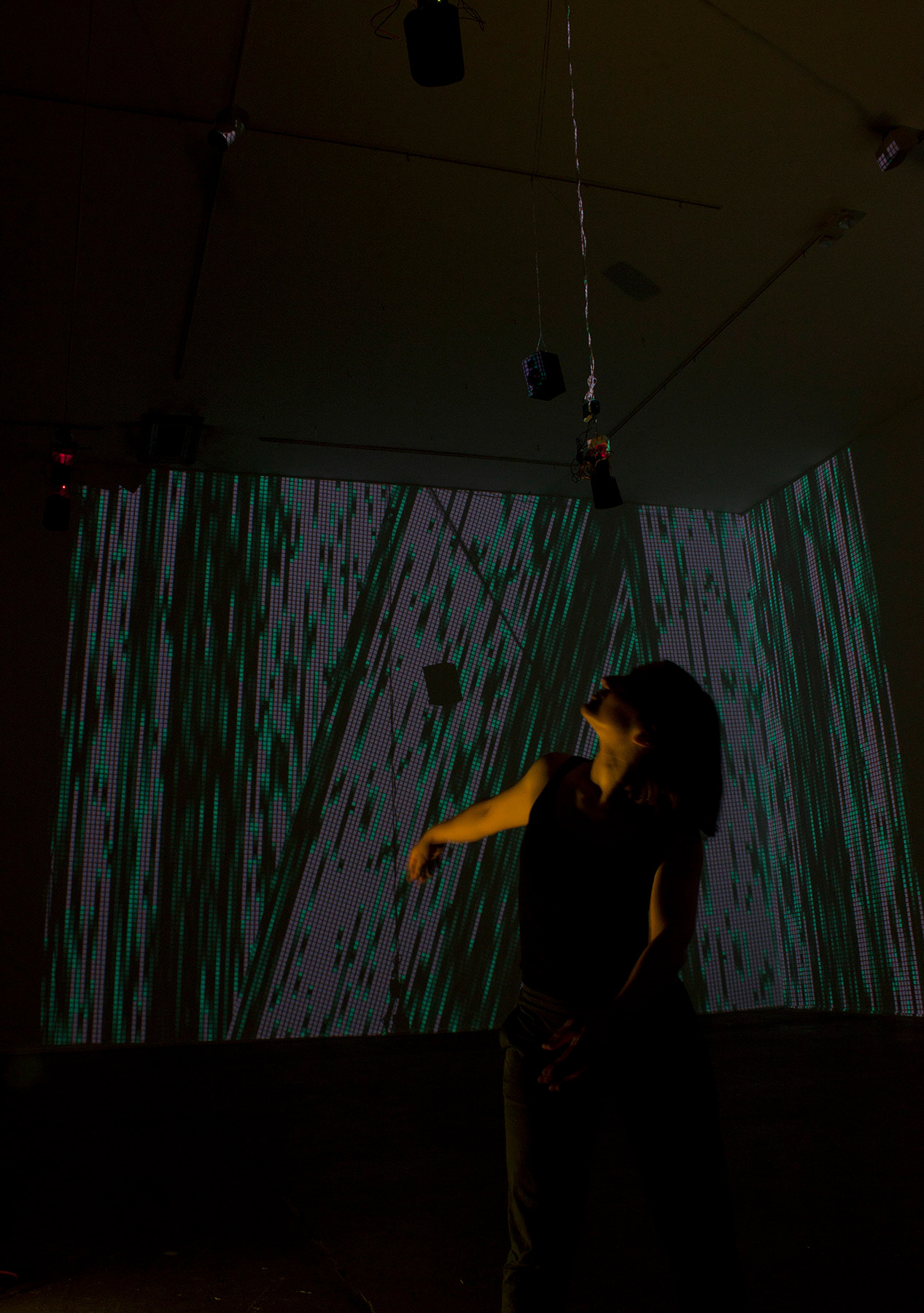

A Corporeal Orchestration of Sounds, 2017, Multimedia (DIY Electronics/sonic sensors, audio/video equipment)
This piece is a system of sensors, speakers, and projectors that measure the impact of movement and human organization as it reconstructs the dismantled fragments of pieces of music with any given group of people. Like an orchestra of instruments, it is the body of the spectator that co-composes the rhythmic content by co-ordinating movements with others as they trigger the sensors.
Leigh Werrell
Mina Zarfsaz’ A Corporeal Orchestration of Sounds
Mina Zarfsaz’ A Corporeal Orchestration of Sounds
Mina Zarfsaz’ current project, A Corporeal Orchestration of Sounds transforms the reverberant chamber of the Icebox Project Space into an interactive playground. The installation comprises a series of sounds and projected patterns triggered by the movement of visitors. As they walk through, viewers are encouraged to consider their relationship to the spaces they occupy as well as the nature of their interactions with other people.
The viewer is obligated to become a performer in their first step across the threshold - activating a quick snare drum beat that sets a rhythm and demonstrates the correlation between the individual’s movement and the auditory and visual components of the piece. This sound then triggers broken lines of projected light in purple and green to appear and crawl in parallel, diagonal patterns across two of the walls. As the viewer continues into the space they encounter a number of motion sensors hanging in the center, each attached to exposed circuit boards and hand- wired electronics. When triggered, each creates a noise - a small segment of a different song or music sample. Some tunes also trip other sensors, creating an ongoing sound phenomenon. A burst of light corresponding to each sound is projected and moves along the wall. A footstep, clap or shout will also generate light.
Humans are often able to ignore or take for granted the consequences that their actions have on a space or those around them. Moving through this installation as an individual, the participant becomes exceptionally aware of their body; tracking which action results in which sound and how the light correlates. The visitor is unable to ignore the effect of their movement in the space, making each motion or sound a purposeful causation, while also generating a sense of powerlessness. If another enters this space, the song and visuals change, becoming a more complex portrait of movement. The viewer recognizes this interaction and decides whether to act deliberately with the other participant or to continue their singular song and dance. Either choice affects the combined compositions, and through this process a new self-awareness is created within the participant.
The dynamic of this work shifts as the quantity of participants rises and the noise becomes more chaotic. The tunes that are triggered are fragments of the Iranian resistance song, Yare Debestanie Man. A group walking through the gallery serves as a facsimile of a gathering of people singing this melody. As in the composition of a piece of music, we understand that each individual sound is meaningful, however, when put together they affect one another, just as individuals influence others in such gatherings as a protest group, classroom, or group of friends.
The performance of the viewers in this project mimics the communication, cooperation, and everyday interactions of human life. Through metaphors made of sound and light we are reminded of the vulnerability of humankind. Carried back into the outside world is an inherent curiosity resulting in the formation of a greater mindfulness of the manifold ways that our actions, be they direct or unintentional, affect change in our environment and those around us.
——
Leigh Werrell is a freelance writer, artist and educator living and working in Philadelphia.
This project was partially made possible with the Leeway Foundation Art & Change Grant.
